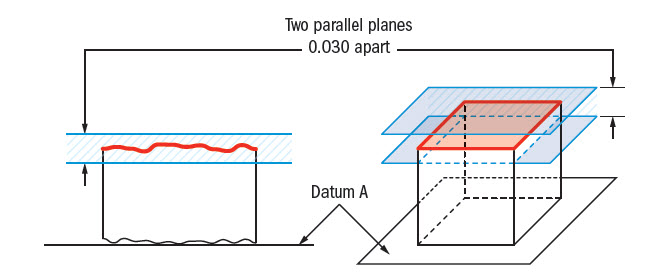Galvanized sheet thickness tolerances thickness in inches weight thickness in millimeters gage min.
General tolerance sheet metal thickness.
General dimensional tolerances for parts formed by press working from sheet metal basic size step grades g rad ea b c over 1000 to 2000 incl.
Over 120 to 400 incl.
Sheet metal is metal formed by an industrial process into thin flat pieces.
Each range is proportional to the length of the sheet or cut length with a minimum tolerance at 2000mm length.
6 or less note grade a b and c are equal to tolerance.
The sheet metal does however have a tolerance on the rolling thickness which needs to be taken into account when designing a tight fitting assembly especially as the sheet metal material gets thicker.
Sheet metal guage tolerances.
This level of accuracy would generally be unachievable by the metal producer.
Iso 2768 is mainly for parts that are manufactured by way of machining or removal of materials.
Thicknesses can vary significantly.
As per design requirements and manufacturing capability tolerance class is defined.
Extremely thin sheets are considered foil or leaf and pieces thicker than 6 mm 0 25 in are considered.
Over 6 to 30 incl.
All tolerance limits are given in mm.
Special tolerance should be specifically requested.
General dimensional tolerance of blanking unit mm 1.
2 the flatness tolerances only apply to sheet and plate.
And astma653 a653m 94 standard specification for sheet steel zinc coat.
Category b c d tolerances on normal flatness mm thickness mm width mm category b category c category d th 25 00 w 1200 18 23 1200 w 1500 23 30 after prior agreement w 1500 28 38 2 the flatness tolerances only apply to sheet and plate.
For sheet metal parts iso 27 68 mk is used.
General tolerance iso 2768 does not specify where to use these tolerances.
Standard specification for general requirements for sheet steel metallic coated by the hot dip process formerly astma525.
Without a specified tolerance this could mean the purchaser wants a metal sheet that is 48 00000000 inches by 96 00000000 inches.
Unlike the old standards these tolerances apply for any length that can be supplied and across the whole thickness range.
In the above example m and k has defined the tolerance.
During the rolling process the rollers bow slightly which results in the sheets being thinner on the edges.
And for machined components iso 27 68 fh can be used.
Over 30 to 120 incl.
The tolerances in the table and attachments reflect current manufacturing practices and commercial standards and are not representative of the manufacturer s standard gauge which has no inherent tolerances.
Over 400 to 1000 incl.

